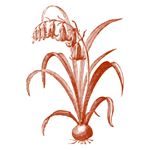If discerning vocation has to with letting your life speak, as Parker Palmer says, the next logical question might well be, “But how? Where do I begin?”
At midlife, we’ve got some serious miles on our odometer. We’ve had experiences. Been shaped by our relationships. Know something of our strengths and weaknesses. We have a history – with ourselves, with God, and with others. How do we begin to make sense of what’s come before in order to discover not only where we may be going, but who we are becoming?
 I found it helpful to work through the materials in the series of workbooks called Listen To My Life: Maps For Recognizing and Responding to God in My Story created by Sibyl Towner and Sharon Swing. This series of 8 slim booklets is written from a solidly Biblical perspective, and invites users to:
I found it helpful to work through the materials in the series of workbooks called Listen To My Life: Maps For Recognizing and Responding to God in My Story created by Sibyl Towner and Sharon Swing. This series of 8 slim booklets is written from a solidly Biblical perspective, and invites users to:
- Reflect on your current circumstances
- Review your life story
- Recognize your unique design
- Take inventory of your life’s “valley experiences”
- Consider how God is at work in your everyday life
- Envision the life God wants to life through you
- Stay attuned to the life-giving rhythms that shape your relationship with God and others
- Name what you are discovering about your life and claim fresh purpose
Listen To My Life doesn’t tell you what to think or who to be, but instead offers great questions, meaningful creative exercises designed to spark reflection, and prompts for prayer and Scripture meditation. There is a separate booklet with an introduction, overview, and some general instruction. In addition. the website (http://www.onelifemaps.com) has additional supportive resources for users and facilitators as well. While the materials can be used by individuals, they are designed to to be done in a group setting.
The first booklet, My Life Now, typlifies the approach in Listen To My Life. After a short introduction inviting participants to invite God into this process, each participant is given a sheet divided into sections with a series of questions like “What’s my current situation? What’s pressing? Who’s involved? What am I drawn toward? What’s most important? What’s causing restlessness? What lingering questions do I have?” Each participant is invited to jot words, phrases, or doodles in response to those questions. The “map” is for personal use, and not be be shared with others, though facilitators are encouraged to invite participants to share a few of their reflections with others at whatever level they feel comfortable doing so. After that exercise is completed, there is space to reflect on what surfaced in the exercise through prayer and Scripture meditation. If you want to go deeper in any subject area, each booklet closes with a listing of additional resources.
I appreciated the interactive nature of Listen To My Life, as well as the thoughtful prayer and Scripture prompts. The Bible study I attend sampled a couple of the booklets in a group setting, and I worked through others on my own. I was grateful for the way in which the materials encouraged intentionality and introspection without being self-indulgent in their approach. Instead, the goal of Listen To My Life is wholeness – greater integration and connection with God, self, and others. Though not targeted specifically at those at midlife, I believe those of us entering or in the second half of life can find this material helpful as we seek to learn to listen to our lives.
Photo by Nick Hillier on Unsplash




